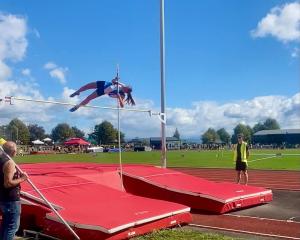
The blasted white pebble taunts me every time I open the top drawer of my dresser.
It should have twice been buried on Christchurch's Sumner Beach, or such was the plan.
As I stood on Kumara Beach as dawn broke on a day in early February 2008, I had a romantic notion of carting this piece of West Coast granite as I ran, cycled and kayaked across the South Island, depositing it on Sumner Beach later that night.
Endurance athletes talk about entering a dark hole. On that February morning I went smack bang into that zone within an hour of starting, lost in a mental fog of intimidation and a feeling of being unworthy.
That self-doubt expanded to monster proportions following normally innocuous incidents: a bike speedo malfunction, falling off the tail of a peloton and hitting a head wind.
I never recovered and failed to make the cut-off time for the start of the kayak leg.
I was devastated and humiliated but, so I thought, stronger for the experience. In 2009 I, and that ever-present pebble, sought redemption, lining up alongside the Steve Gurneys and Richard Usshers of this world - people I rate as some of the toughest and most talented athletes on the planet.
But once again it all unravelled.
Eating regularly is crucial in multisport. In previous two-day events I lost 4kg in 48 hours, but for some unfathomable reason in 2009 I did not eat enough and simply ran out of steam, again failing to meet a cut-off deadline.
The event has become my nemesis.
The first thing that strikes you when you arrive on the eve of the race at the Kumara Racecourse camping ground is its size.
There are thousands of athletes and their support crews with millions of dollars in bikes and kayaks, but the atmosphere is positive, the people outgoing, enthusiastic and friendly.
As you walk to the race start the next morning there are long queues outside the numerous, strategically placed portaloos.
Adrenaline has side effects.
Most competitors never expect to stand on a podium.
The majority enter to take themselves out of their comfort zone and because the Coast to Coast is one of the world's great sporting events.
While the two-day event is achievable for most, it is not easy.
It is scary riding at 50kmh in a peloton centimetres away from another rider; the run is, in fact, a hike or scramble over rocks, through rivers, along river beds and bush. By the time you climb into your kayak your muscles ache, you are tired and, for many, you are about to face your worst fear, sitting in a tube of fibreglass in a fast-moving river.
Conveniently, the noise from jet boat motors alerts you to the looming rapids in the Waimakariri Gorge, but still the river is littered with the chaos of kayakers emptying their boats after being tipped out.
Stories abound of people going through rapids backwards, getting pinned against the canyon walls and others holing their boat.
The final ride to Christchurch is a buzz, although usually accompanied by a head wind.
Residents line the streets cheering and spraying cold water when it is hot, and police control intersections so you have a non-stop ride.
One stiflingly hot year I craved sugar and stopped twice on the final ride to ask for some Coke to provide an energy boost, which was happily provided.
The West Coast and Canterbury communities rally behind the event, including Kumara sporting and community clubs feeding 1200 people on the eve of the race and the Sheffield School setting up a stall amid the tussock in remote Mt White to sell cooked breakfasts from 5am on Saturday.
Robin Judkins has created an addictive event, but it is a healthy addiction and one I may need to taste again.











